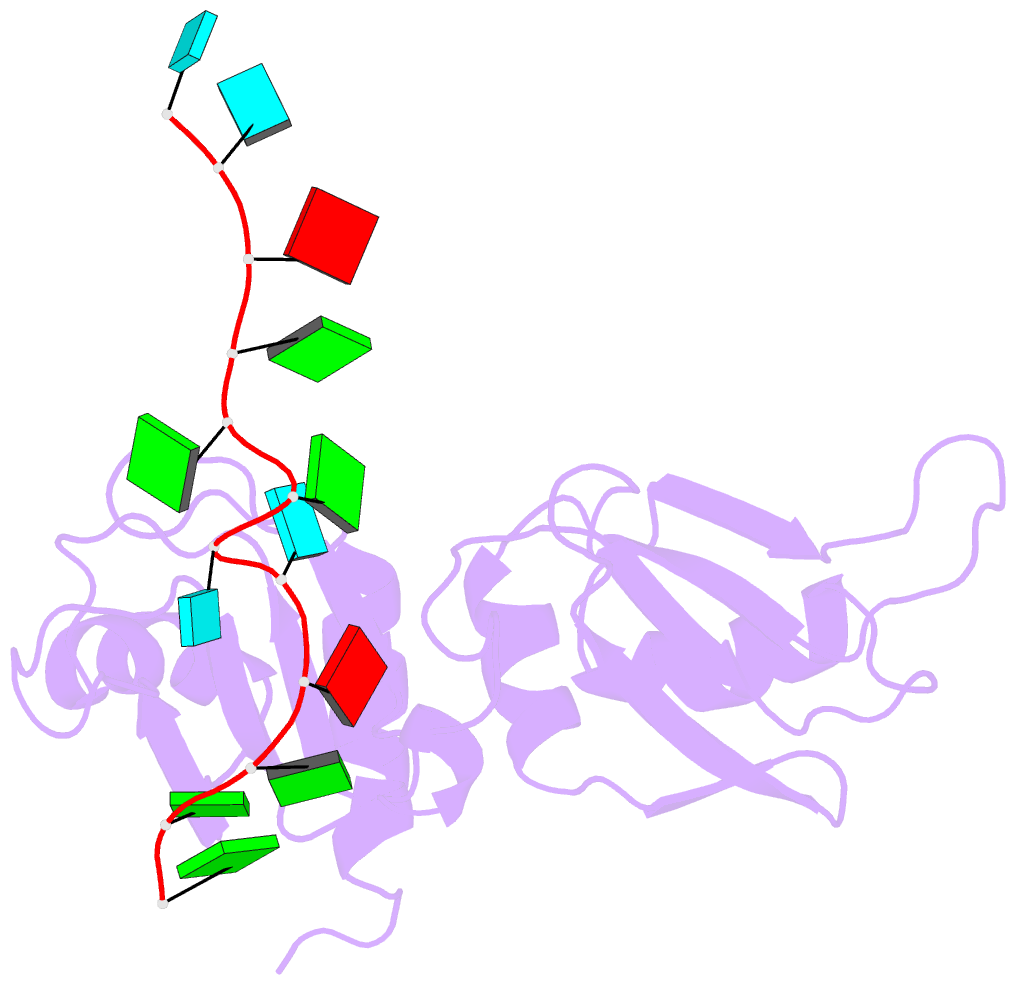Summary information and primary citation
- PDB-id
- 8x0n; SNAP-derived features in text and JSON formats;
DNAproDB
- Class
- RNA binding protein-RNA
- Method
- X-ray (2.8 Å)
- Summary
- The molecular mechanism of hnrnpa1 recognize terra RNA.
- Reference
- Xu Z, Liu Y, Li F, Yang Y, Zhang H, Liu X, Xie X, Chen X, Shi Y, Zhang L (2024): "Phase separation of hnRNPA1 and TERRA regulates telomeric stability." J Mol Cell Biol. doi: 10.1093/jmcb/mjae037.
- Abstract
- Telomeres are repetitive DNA sequences and associated protein complexes located at the end of chromatin. As a result of the DNA replication ending issue, telomeric DNA shortens during each cell cycle. The shelterin protein complex caps telomeric ends and forms a high-order protein-DNA structure to protect telomeric DNA. The stability of telomeres is critical for cellular function and is related to the progression of many human diseases. Telomeric repeat-containing RNA (TERRA) is a noncoding RNA transcribed from telomeric DNA regions. TERRA plays an essential role in regulating and maintaining the stability of telomeres. Heterogeneous nuclear ribonucleoproteins (hnRNPs) are RNA-binding proteins associated with complex and diverse biological processes. HnRNPA1 can recognize both TERRA and telomeric DNA. Previous research reported that hnRNPA1, TERRA, and POT1, a component of the shelterin complex, worked coordinately and displaced replication protein A from telomeric ssDNA after DNA replication, promoting telomere capping to preserve genomic integrity. However, the detailed molecular mechanism has remained unclear for over twenty years. Our study revealed the molecular structure through which the hnRNPA1 UP1 domain interacts with TERRA. Through structural analysis, we identified critical residues on the interacting surface between UP1 and TERRA. Furthermore, we proved that nucleic acids significantly increase the phase separation ability of hnRNPA1 and disrupting the UP1-TERRA interaction extraordinarily affects hnRNPA1 droplet formation both in vitro and in vivo. Taken together, these data revealed the molecular mechanism of the droplet formation of hnRNPA1 and TERRA and the possible function of the droplets for maintaining genomic stability.





